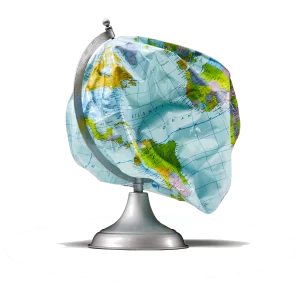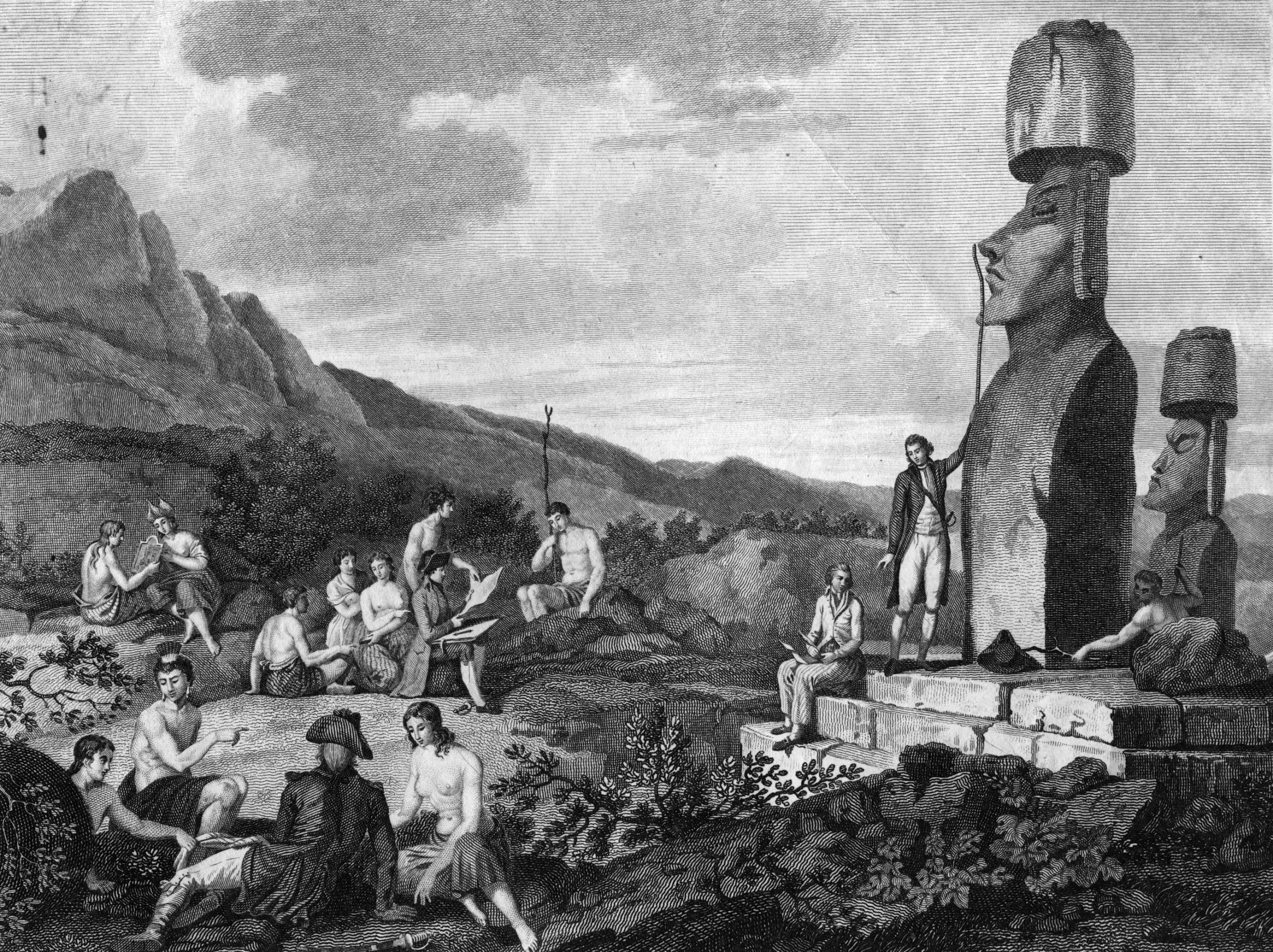The untold history of how people survived the past 2,000 years.

If you’re under the impression that climate change drove ancient civilizations to their demise, you probably haven’t heard the full story.
The ancient Maya, for example, didn’t vanish when their civilization “collapsed” around the 9th century. Though droughts certainly caused hardship, and cities were abandoned, more than 7 million Maya still live throughout Mexico and Central America. The Maya dealt with dry conditions by developing elaborate irrigation systems, capturing rainwater, and moving to wetter areas — strategies that helped communities survive waves of drought.
A report recently published in the journal Nature argues that an obsession with catastrophe has driven much of the research into how societies responded to a shifting climate throughout history. That has resulted in a skewed view of the past that feeds a pessimistic view about our ability to respond to the crisis we face today.
“It would be rare that a society as a whole just kind of collapsed in the face of climate change,” said Dagomar Degroot, an environmental historian at Georgetown University and the lead author of the paper. The typical stories of environmentally-driven collapse that you might have heard about Easter Island or the Mayan civilization? “All those stories need to be retold, absolutely,” he said.
Painting a more complex picture of the past — one that includes stories of resilience in the face of abrupt shifts in the climate — might avoid the fatalism and despair that sets in when many people grasp the scale of the climate crisis. Degroot himself has noticed that his students were beginning to echo so-called “doomist” talking points: “Past societies have crumbled with just a little climate change, Doomists conclude — why will we be any different?” Part of the reason people study the past, Degroot said, “is because we care about the future, and about the present, for that matter.”
Of course, the idea that a changing climate can drive collapse isn’t wrong. It’s just not the whole story. “Certainly our article did not disprove that climate changes have had disastrous impacts on past societies — let alone that global warming has had, and will have, calamitous consequences for us,” Degroot wrote in a post. Even modest changes in the climate have caused problems. And today’s planetary changes are anything but modest: The world is on track to see an alarming 3.2 degrees C (5.8 degrees F) warming by the end of this century, even if countries meet their current commitments to cut greenhouse gas emissions under the Paris Agreement.

The new paper looked at ways that societies adapted to a shifting climate over the last 2,000 years. Europe and North America endured periods of moderate cooling: the Late Antique Little Ice Age around the 6th century, and the Little Ice Age from the 13th to 19th centuries. Looking at case studies from these frigid eras, the researchers concluded that many societies responded with flexibility and ingenuity. They detail examples of people moving into different regions, developing trade networks, cooperating with others, altering their diets, and finding new opportunities.
When volcanic eruptions fueled the Late Antique Little Ice Age, for example, the Romans took advantage of a rainier Mediterranean. Settlements and market opportunities expanded as people began growing more grains and keeping more grazing animals. They built dams, channels, and pools to help farmers in more arid areas manage water, and, according to the paper, “the benefits were widespread.”
During the Little Ice Age in the 17th century, the whaling industry in Norway’s northern islands in the Arctic Ocean actually functioned more effectively during colder years. According to Degroot’s research, whalers coordinated with each other and concentrated their efforts on a limited number of days in spots where whales could be easily caught.
In what is now southeastern California, which vacillated between periods of severe drought and increased rain toward the end of the 15th century, Mojave settlements dealt with the unsteady climate by turning to regional trade. They developed new ceramic and basket-weaving techniques, trading for maize, beans, and squash produced by their southern Kwatsáan neighbors.
If stories of adaptation are so common, why aren’t they told more often? Maybe that’s because people are more interested in understanding catastrophes and why they happened, rather than ones that … didn’t. “You can imagine if you do that over and over again, then the entire field is going to focus on disaster,” Degroot said. “And that’s exactly what has happened, I think.”
In the study, an international team of archaeologists, historians, paleoclimatologists, and other experts reviewed 168 studies published on the Little Ice Age in Europe over the past 20 years. While 77 percent of the studies emphasized catastrophe, only 10 percent focused on resilience. In this context, “resilience” refers to the ability of a group to cope with hazards, responding and reorganizing without losing their core identity.
Stories of collapse are often told as parables of what happens when humans wreck things (think Noah’s Ark). The public’s interest in environment-driven collapse picked up in 2005 with the publication of Jared Diamond’s book Collapse: How Societies Choose to Fail or Succeed. Some took issue with the interpretations in the book. Take Easter Island, or Rapa Nui, the South Pacific island settled by Polynesians known for its monoliths of heads (actually, the rest of their bodies are underground). The book popularized the idea that the population crashed because the islanders slashed and burned all the trees — a cautionary tale on the perils of destroying the environment.
The new story about Rapa Nui is more complicated. In the article “The truth about Easter Island: a sustainable society has been falsely blamed for its own demise,” the archaeologist Catrine Jarman attributed deforestation to the tree-munching rats the Polynesians brought with them, and blames the population crash in the 19th century on slave raids and diseases introduced by European traders.
Recent research suggests that indigenous groups have been particularly good at adapting to climate changes, Degroot said, “either because they were able to migrate or because they were able to alter the distribution of resources that they relied upon.”
Even though many societies survived the pressures of the mini ice ages, Degroot found that resilience sometimes “is a product of one community having access to favorite resources, maybe over another.” The wealthy 17th-century Dutch, for example, imported grains from around the Baltic and then sold them for “lucrative profits” wherever the weather caused grain shortages in Europe. The lesson for today, Degroot said, is that “we need to think about building equality as a way of adapting to climate change.”
The report lays out best practices for researchers to follow when they study the history of climate and society, outlining ways to reduce biases and avoid the misuse of historical data. Following a more rigorous process may well end up unearthing more examples of people facing searing heat and dried-up wells, and still finding ways to survive. “We hope that this discourages the kind of doomist idea that the past tells us that we’re screwed,” Degroot said. “We might be! But the past does not tell us that.”
Republish: https://grist.org/science/did-climate-change-cause-societies-to-collapse-new-research-upends-the-old-story/

